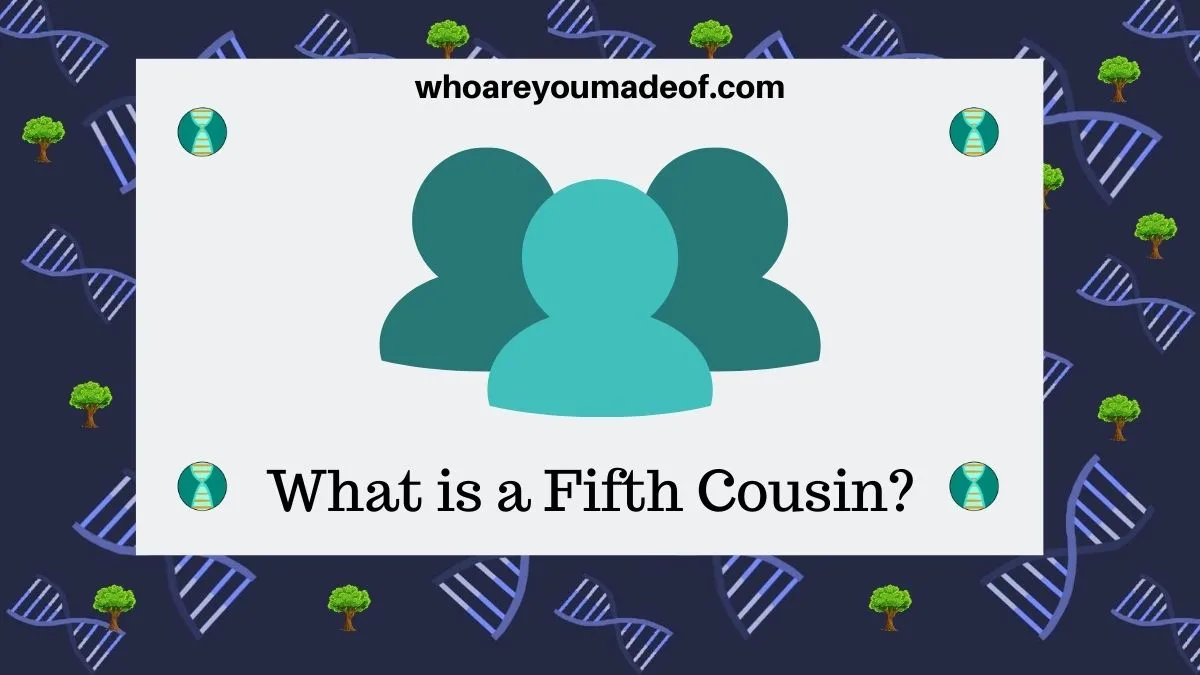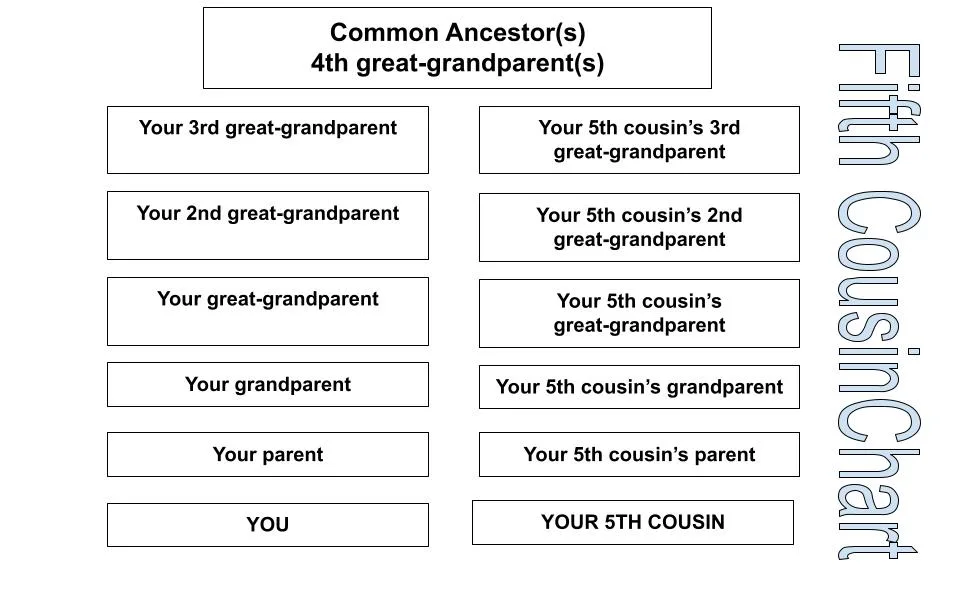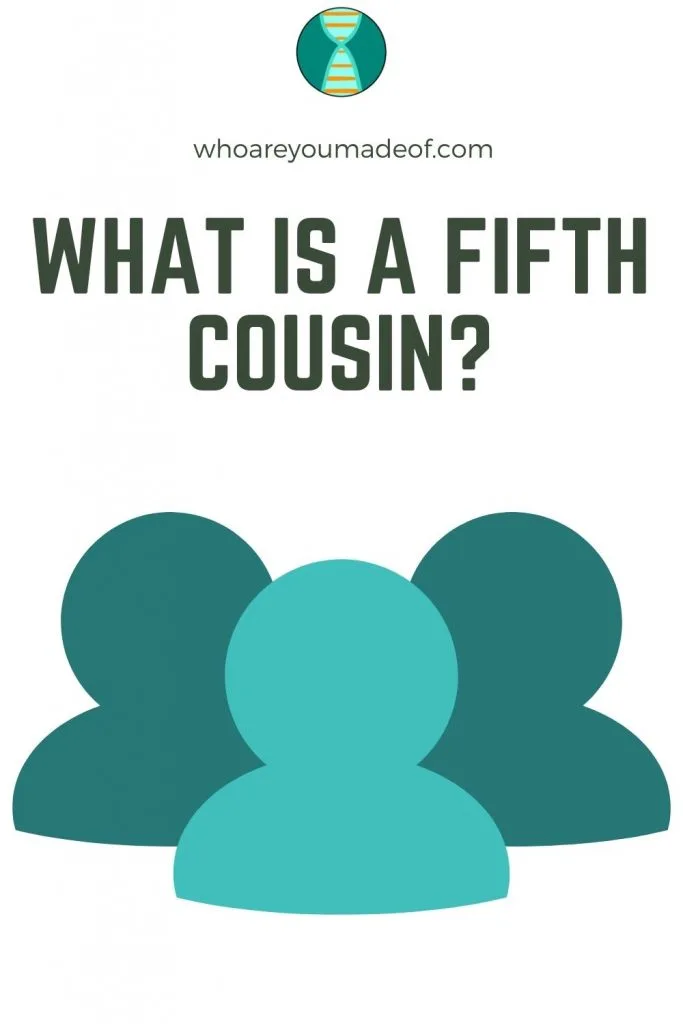Do you want to know the definition of a fifth cousin? In this post, find out everything about how fifth cousins are related, the common ancestors they share, and how many you might have.
You will also find out:
- The difference between a full and a half-fifth cousin
- What makes a fifth cousin once-removed
- Whether fifth cousins are blood-related

Most of us don't grow up knowing our fifth cousins. In fact, it would be pretty unusual for two people to know for a fact that they are fifth cousins.
The average person likely cannot identify exactly what a fifth cousin really is. That's what this article is for, so I hope it helps you out.
What is the definition of a fifth cousin?
Fifth cousins share at least one great-great-great-great grandparent as a common ancestor and are descended from different offspring of the ancestor(s).
Another way to think about fifth cousins is that your great-great-great grandparent and the great-great-great grandparent of your fifth cousin were siblings.
We have 64 fourth great-grandparents (i.e. great-great-great-great grandparents), and we likely have fifth cousin descended from their offspring on almost all lines of our family tree.

Are fifth cousins distant cousins?
Yes, fifth cousins are considered to be distant cousins. The reason that fifth cousins are considered to be distant is because these cousins are unlikely to know each other due to the large degree of separation and distance back to the common ancestor.
The shared ancestor of fifth cousins, the great-great-great-great grandparent, is no longer living. In addition, their offspring (the 3rd great-grandparents of fifth cousins) are likely no longer living, either.
Our more recent ancestors are usually how families stay together and maintain connections between descendants. Fifth cousins are unlikely to have parents, grandparents, or great-grandparents who have kept in touch with these collateral lines, and thus, their descendants typically do not know each other personally.
How many degrees of separation are there between fifth cousins?
There are twelve degrees of separation between fifth cousins. From a genealogical perspective, relatives related more distantly than third cousins are considered distant relatives.
Fifth cousins are distant cousins for several reasons, one of them being that we have a LOT of them. You can read exactly how many you might have below.
Fifth cousins are also distantly related by using the "degree of separation" measurement, which is also known as a degree of consanguinity. Cousins who are descended from a common great-great-great-great grandparent, fifth cousins, have twelve degrees of separation between them.
This is calculated by counting six generations up from one fifth cousin to the common ancestor, the fourth great-grandparent, and then six generations down to the other fifth cousin.
Compared to second or third cousins, who are related at six and eight degrees, respectively, fifth cousins are most definitely distant family members.
What is a fifth cousin once-removed?
A fifth cousin once-removed is the genealogical relationship that one has with the child of their fifth cousin or their parent's fifth cousin.
The "once-removed" accounts for the fact that the cousins are a different number of generations removed from the most recent common ancestor.
The most recent common ancestor of fifth cousins once-removed is the fourth great-grandparent of the fifth cousin and the fifth-cousin once-removed parent.
If one's parent's fifth cousin also has children, then those children are one's sixth cousins.
What is a half-fifth cousin?
Sometimes, we might only share one great-great-great-great grandparent with our fifth cousin, instead of a set of great-great-great-great grandparents. When this happens, our fifth cousin is a half-fifth cousin.
Maybe our great-great-great-great grandmother passed away and her husband remarried. If this happened, and your fifth cousin is descended from the second spouse, then you and your fifth cousin and half-fifth cousins.
If your 4th great-grandparent did remarry, only the fifth cousins who are descended from the other spouse are your half-fifth cousins. All of the fifth cousins who are descended from both 4th great-grandparents are full fifth cousins to each other.
Recommended reading: Find out more about half-cousins
How many fifth cousins do you have?
Are you ready to rent a bigger venue for your next family reunion? The average person has about 17,300 fifth cousins.
That's enough fifth cousins to easily fill up the Hollywood Bowl stadium in Los Angeles, California or the Kindl-Bühne Wuhlheide in Berlin, Germany, the second-largest open-air performance arena in the city.
The cool thing about fifth cousins is that each one of them shares a part of your family's story - a really big family story. Since all of your fifth cousins are descended from siblings of your great-great-great grandparents, they all have a different perspective on your family's journey through time.
How to find your fifth cousins
If you are interested in locating a few of your 17,000+ fifth cousins, there are a few ways that you could go about it. Most people would be interested in this process because of family tree research.
While it would probably be impossible to meet every single fifth cousin in your family, connecting with a few of them is certainly possible.
DNA testing is an excellent way to find fifth cousins who might also be interested in learning and sharing family tree and genealogical information. DNA results usually include DNA matches, and you are very likely to find many fifth cousins among them.
If you aren't interested in doing a DNA test, you can still find fifth cousins by doing online family tree research on sites such as Ancestry. While researching your great-great-great-great grandparents, you are likely to find other descendants who are also interested in learning about them and have published their family trees on the site.
Are fifth cousins blood related?
Even though fifth cousins are definitely related to each other, they might not share DNA. There is a 10-15% chance that you share genetic material with any given fifth cousin.
If you are "blood related" and do share DNA with your fifth cousin, the amount of shared DNA is small. You are likely to share only about .05% of your total genome with your fifth cousin.

Conclusion
I hope that this post has helped you learn more about fifth cousins, exactly how they are related to you, who your common ancestor is, and how many fifth cousins you might have.
If you are one of the rare people that grew up knowing some of your fifth cousins, or if you have a question about something that you read in this post, I would love to hear from you in the discussion below.
Thanks for stopping by today!

Layne
Saturday 15th of April 2023
I recently found out that my husband is my 5th cousin! 😳 In doing genealogical work on Ancestry.com I learned that our 3rd great grandparents were siblings! I use to hear my grandmother speak of her great grandmother who was a sister to my husband’s 3x great grand! Small world!
Janice Rae Colhan
Wednesday 13th of April 2022
Thanks for posting this article. It was very clear and made the fifth cousin relationship easily understood.
Mercedes
Thursday 14th of April 2022
Thank you so much for your nice comment! I am very glad that the information helped you understand the cousin relationship :) Sincerely, Mercedes
Art Hoch
Friday 8th of April 2022
I understand Franklin Roosevelt and his wife Eleanor were 5th cousins. Is that correct? Thank you,.
Tim
Friday 4th of March 2022
Is 12 Centimorgans of DNA a lot to share with a full 5th Cousin?
Mercedes
Thursday 17th of March 2022
Hi Tim, No, this amount is right within range. Thank you for your comment! Sincerely, Mercedes
Alysia Prinsloo
Tuesday 5th of October 2021
Thank you, very informative! Through my research into my husband's as well as my own ancestry, I found that my hubby is my 5th cousin once removed!